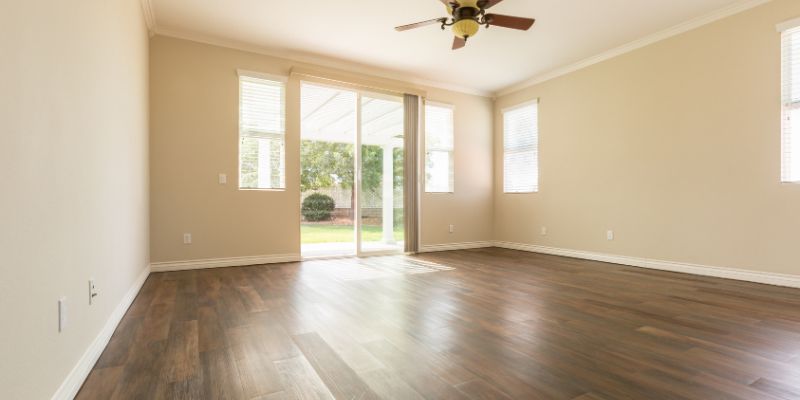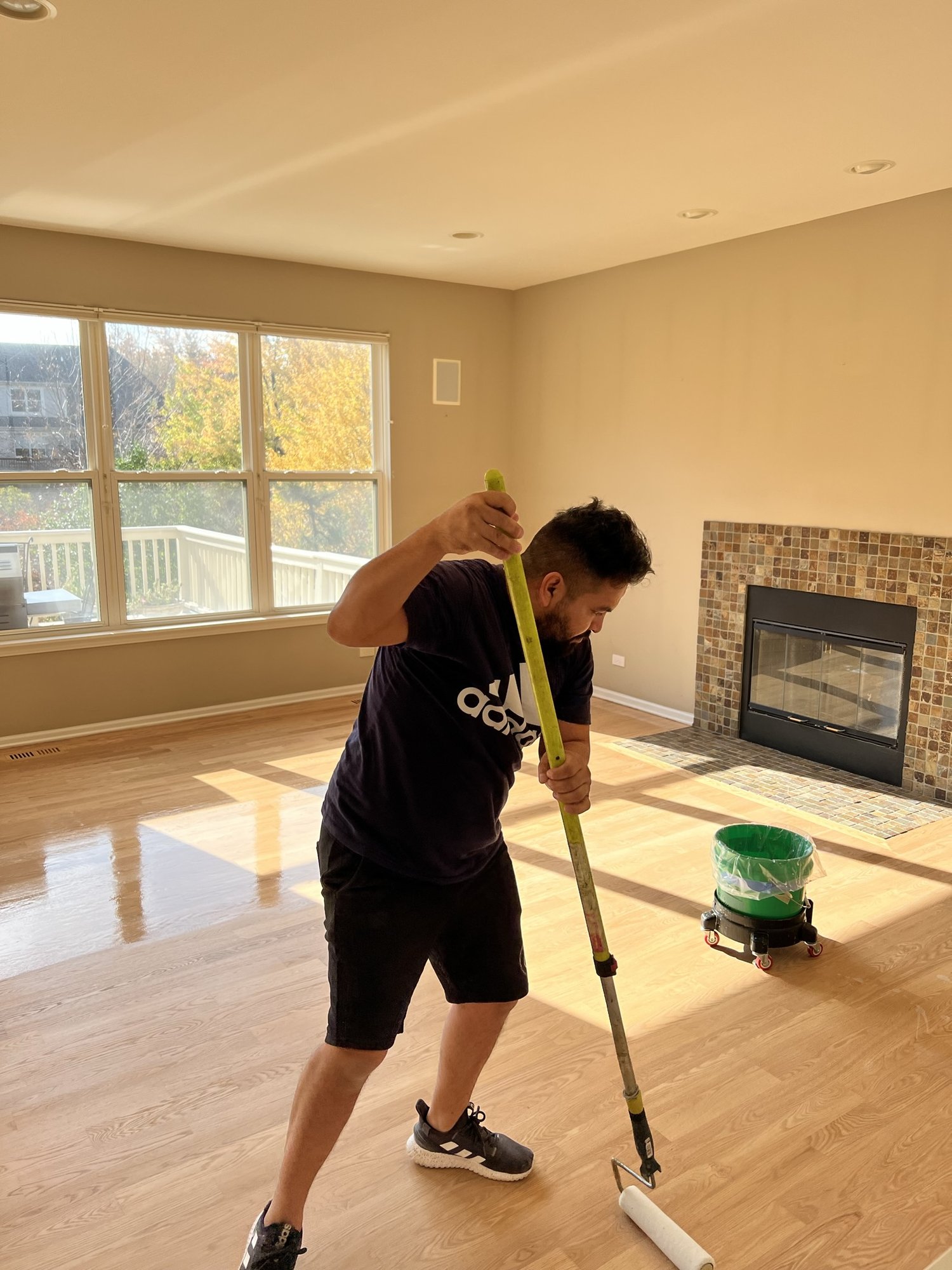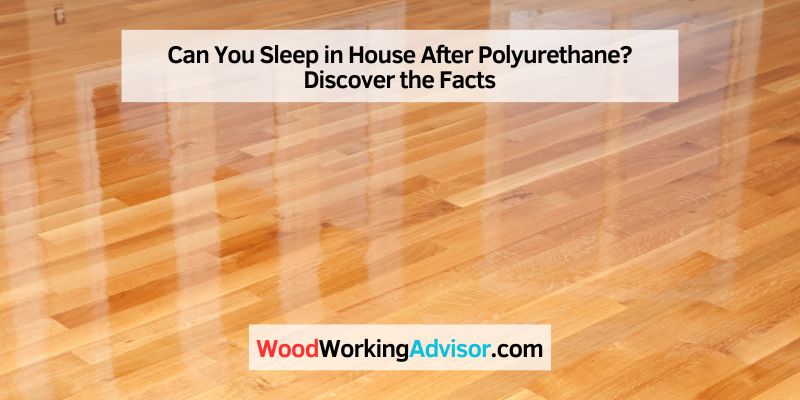Yes, you can sleep in a house after polyurethane has been applied. Polyurethane dries within a few hours, making it safe for occupancy.
Understanding Polyurethane
After applying polyurethane, it is generally safe to sleep in the house as long as the area is well-ventilated. Allow fresh air to enter for at least 24-48 hours to minimize exposure to potentially harmful fumes. This step ensures health and safety while promoting a restful night’s sleep.
What Is Polyurethane?
Polyurethane is a synthetic material widely used in the manufacturing industry due to its versatility and durability. It is a type of polymer formed by the reaction of isocyanate with a polyol. The resulting material can be found in various forms, including foams, adhesives, coatings, and sealants.
Types Of Polyurethane
There are different types of polyurethane that serve specific purposes and applications. Understanding these types can help you make informed decisions when it comes to using polyurethane-based products.
Rigid Foam
Rigid foam polyurethane is commonly used for insulation purposes, providing excellent thermal resistance. It is often found in the construction of walls, roofs, and floors to enhance energy efficiency in buildings.
Flexible Foam
Flexible foam polyurethane is known for its soft and cushiony texture, making it ideal for applications such as mattresses, upholstery, and cushions. Its ability to conform to shapes and provide comfort makes it a popular choice in the furniture industry.
Coatings
Polyurethane coatings are used to protect surfaces from abrasion, chemicals, and corrosion. They are commonly found in the automotive industry as clear coats for paint protection, as well as in flooring applications to provide a durable and glossy finish.
Adhesives
Polyurethane adhesives are known for their strong bonding capabilities, making them suitable for a wide range of materials including wood, metal, glass, and plastics. They are commonly used in construction, woodworking, and automotive industries.
Sealants
Polyurethane sealants are used to fill gaps, cracks, and joints in various materials, providing a watertight and airtight seal. They are commonly found in construction and automotive applications, ensuring protection against moisture and drafts.
Understanding the different types of polyurethane can help you determine its properties and applications. Whether you are considering using polyurethane foam for insulation or polyurethane adhesive for your DIY project, having a basic understanding of this versatile material can help you make informed decisions.

Drying Time Of Polyurethane
Polyurethane dries within 24 hours, but it’s recommended to avoid sleeping in a freshly finished home. The strong fumes can pose health risks, so it’s best to wait until the odor dissipates before settling in for a good night’s sleep.
How Long Does Polyurethane Take To Dry?
Polyurethane is a popular choice for protecting and enhancing the appearance of wooden flooring or furniture. When it comes to drying time, it’s important to consider several factors to ensure your safety and the quality of the finished surface.
The drying time of polyurethane varies based on different factors. On average, it can take anywhere from 24 to 72 hours for polyurethane to dry completely. However, this time frame can vary depending on the specific type of polyurethane used, the thickness of the applied layer, and the environmental conditions.
To have a better idea of the drying time, refer to the instructions provided by the manufacturer of the polyurethane. These instructions will often include specific recommendations for the drying time, as well as the number of coats needed for optimal results.
Factors Affecting Drying Time
The drying time of polyurethane can be influenced by several factors. Understanding these factors will help you plan your project accordingly and ensure a successful outcome:
- Temperature and Humidity: Higher temperatures and lower humidity levels generally promote faster drying times. On the other hand, lower temperatures and higher humidity can prolong the drying process. It’s important to note that excessive humidity can lead to longer drying times and potential issues such as bubbles or a cloudy appearance. It’s recommended to work in a well-ventilated area or use air movers to help speed up the drying process.
- Type of Polyurethane: Different types of polyurethane, such as oil-based and water-based, have different drying times. Oil-based polyurethane tends to have a longer drying time compared to water-based polyurethane. Read the product label or consult with the manufacturer to determine the drying time specific to the type you’re using.
- Thickness of Application: The thickness of the applied polyurethane layer affects the drying time. Thicker layers generally take longer to dry compared to thin coats. It’s recommended to apply multiple thin coats, allowing each coat to dry fully before applying the next, for optimal results.
- Ventilation: Proper ventilation is crucial for the drying process. It helps in dissipating the fumes and allows fresh air to circulate, expediting the drying time. Ensure windows and doors are open, and consider using fans or air movers to facilitate air circulation.
Sleeping In A House After Polyurethane Application
Applying polyurethane to floors or furniture can greatly enhance their appearance and durability. However, you may wonder if it is safe to sleep in a house after polyurethane application. While polyurethane generally dries quickly, it is important to consider certain safety precautions and ventilation measures to ensure a healthy sleeping environment.
Safety Precautions
Polyurethane emits volatile organic compounds (VOCs) during the drying process, which can cause respiratory irritation and other health concerns. To mitigate these risks, follow these safety precautions before sleeping in a freshly polyurethaned house:
- Adequate Drying Time: Ensure that the polyurethane has been fully cured before sleeping in the house. This typically takes between 24 to 48 hours, depending on the type of polyurethane and environmental conditions.
- Protective Equipment: Wear a respirator or mask while staying in the house to reduce inhalation of VOCs.
- Isolation: If possible, consider staying at an alternative location for a day or two after the application to minimize exposure to airborne chemicals.
Ventilation And Air Quality
Proper ventilation is crucial for expelling harmful fumes and improving indoor air quality after polyurethane application. Consider the following measures to ensure adequate ventilation and air quality:
- Open Windows and Doors: Increase air circulation by opening windows and doors to facilitate the release of VOCs.
- Use Fans: Place fans strategically to direct fumes toward open windows and encourage fresh air intake.
- Limit Occupancy: Avoid sleeping in rooms where polyurethane has recently been applied to reduce exposure to residual gases.
Health Concerns And Risks
Sleeping in a house after polyurethane application may pose health concerns and risks. It is important to ensure proper ventilation and allow enough time for the fumes to dissipate before sleeping in the area.
Potential Health Risks
Sleeping in a house that has just been treated with polyurethane can pose potential health risks. The strong fumes emitted by polyurethane products can cause discomfort, irritation, and even health problems in some individuals.
Exposure to these fumes can lead to symptoms such as headaches, dizziness, nausea, and difficulty breathing. Prolonged exposure may result in more severe conditions like respiratory issues and allergies. Individuals with pre-existing respiratory conditions should be particularly cautious.
Preventive Measures
While the strong odor and potential health risks associated with sleeping in a freshly polyurethane-treated house cannot be entirely eliminated, there are preventive measures that can be taken to minimize the impact and promote a safer environment.
- Ensure proper ventilation: Open windows and use fans to increase airflow, helping to reduce the concentration of fumes indoors. Cross-ventilation is key to allowing fresh air to circulate throughout the space.
- Stay out of the treated area: Avoid sleeping in rooms that have recently been treated with polyurethane. Consider finding alternative sleeping arrangements until the odor dissipates.
- Allow for sufficient drying time: Give the polyurethane ample time to dry and cure before occupying the space. It is important to adhere to the manufacturer’s instructions regarding drying time to prevent exposure to uncured chemicals.
- Use air purifiers: Consider using air purifiers with activated carbon filters to help neutralize and remove the strong fumes from the air.
- Seal off treated areas: If possible, seal off the room or area where polyurethane has been used to prevent the fumes from spreading to other parts of the house.
Post-polyurethane Application Care
After you’ve had polyurethane applied to your house floors, it’s important to follow proper post-application care to ensure optimal results and a longer-lasting finish. This involves paying attention to cleaning and maintenance, as well as understanding the duration before normal activity can resume.
Cleaning And Maintenance
Keeping your floors clean and well-maintained is crucial to preserve the beauty and durability of the polyurethane finish. Here are some tips for cleaning and maintenance:
- Regularly sweep or vacuum your floors to remove dust, dirt, and debris that can scratch the finish.
- Use a damp mop with a mild cleaning solution specifically designed for polyurethane finishes. Avoid using excessive water, as it can seep into the wood and cause damage.
- Immediately clean up any spills or stains to prevent them from penetrating the finish. Blot the area gently with a clean cloth, and if necessary, use a recommended wood floor cleaner.
- Avoid using abrasive cleaners, wax-based products, or furniture polishes, as they can leave a residue or dull the finish.
- Place protective pads under furniture legs to prevent scratching when moving or rearranging items.
Duration Before Normal Activity Resumes
Although the drying time for polyurethane can vary depending on factors such as humidity and ventilation, it typically takes about 24-48 hours for the finish to cure completely. During this time, it’s important to avoid any activities or actions that may disrupt or damage the finish. Here’s a rough guide of the duration before normal activity can resume:
| Activity | Recommended Duration |
|---|---|
| Walking on the floors with socks or shoe covers | 24 hours |
| Walking on the floors barefoot | 48 hours |
| Placing furniture back onto the floors | 48 hours |
| Allowing pets on the floors | 48 hours |
| Routine cleaning and maintenance | 48 hours |
It’s important to note that these recommendations are general guidelines and may vary depending on the specific polyurethane product used and the manufacturer’s instructions. Always consult with your flooring professional for proper guidance.

Credit: www.plushardwoodflooring.com
Frequently Asked Questions On Can You Sleep In House After Polyurethane
How Do You Air Out A House After Polyurethane?
After polyurethane, air out the house by opening windows and using fans to increase ventilation. Allow 24-48 hours for fumes to dissipate. Try to avoid spending extended periods in the freshly coated area. Use air purifiers to help accelerate the process, if needed.
Are Polyurethane Fumes Bad For You?
Polyurethane fumes can be harmful to your health, causing irritation to the respiratory system, eyes, and skin. Prolonged exposure may lead to dizziness, headaches, and even more severe symptoms. It’s important to work in a well-ventilated area and use protective gear to minimize the risks.
How Long Does Off-gassing Last Polyurethane?
Polyurethane off-gassing usually lasts for a few days to several weeks. Duration depends on factors like product composition, temperature, and ventilation. To reduce off-gassing, ensure proper ventilation and allow the area to air out.
How Long Should You Wait After Polyurethane?
You should wait 24-48 hours after the polyurethane application before allowing foot traffic. Full cure can take 7-10 days.
Conclusion
In the end, sleeping in a house after polyurethane treatment is possible. Ventilating the area well and allowing the fumes to dissipate is essential. Taking necessary safety precautions ensures a good night’s sleep. It’s important to follow the guidelines given by professionals to ensure a safe and comfortable environment.


